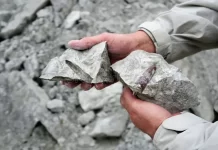1. Vredefort Crater
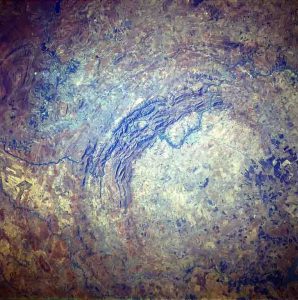
Asteroid impact date: Estimated 2 billion years ago
Location: Free State, South Africa
Specs: Also known as the Vredefort Dome, the Vredefort crater has an estimated radius of 118 miles (190 kilometers), making it the world’s largest known impact structure. This crater was declared a UNESCO World Heritage Site in 2005.
2. Sudbury Basin
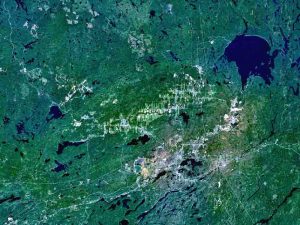
Asteroid impact date: Estimated 1.8 billion years ago
Location: Ontario, Canada
Specs: The Sudbury Basin is considered one of largest impact structures on Earth, with an estimated diameter of 81 miles (130 kilometers). Dating back 1.8 billion years, it is also one of the oldest known impact structures in the world.
3. Acraman Crater
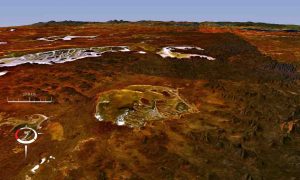
Asteroid impact date: Estimated 580 million years ago
Location: South Australia, Australia
Specs: Located in what is now Lake Acraman, this impact structure has an estimated diameter of 56 miles (90 kilometers).
4. Woodleigh Crater
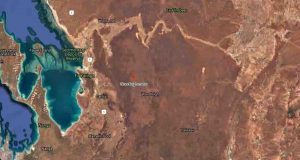
Asteroid impact date: Estimated 364 million years ago
Location: Western Australia, Australia
Specs: This crater is not exposed at the surface and has led to many discrepancies regarding its actual size. Reports on its diameter vary from 25 to 75 miles (40 to 120 kilometers).
5. Manicouagan Crater
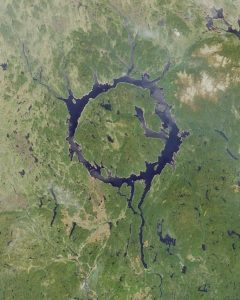
Asteroid impact date: Estimated 215 million years ago
Location: Quebec, Canada
Specs: This impact crater formed what is now Lake Manicouagan. Even with erosion, it’s considered one of the largest and best-preserved craters on Earth, with an estimated diameter of 62 miles (100 kilometers).
6. Morokweng Crater
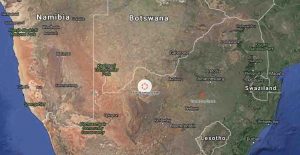
Asteroid impact date: Estimated 145 million years ago
Location: North West, South Africa
Specs: Located near the Kalahari Desert in South Africa, this crater contained the fossilized remains of the meteorite that created it.
7. Kara Crater
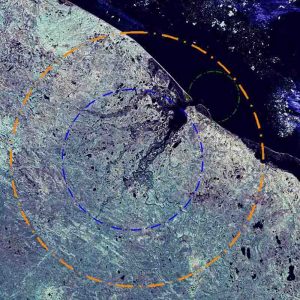
Asteroid impact date: Estimated 70.3 million years ago
Location: Nenetsia, Russia
Specs: Now greatly eroded, the Kara crater is a non-exposed impact structure in Russia. Some have claimed that the impact structure actually consists of two adjacent craters: the Kara and the Ust-Kara crater.
8. Chicxulub Crater
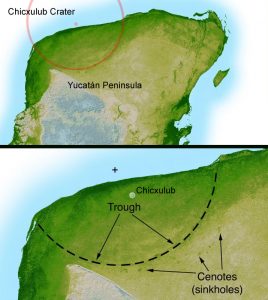
Asteroid impact date: Estimated 65 million years ago
Location: Yucatán, Mexico
Specs: Located on the Yucatán Peninsula in Mexico, many scientists believe that the meteorite that left this crater caused or contributed to the extinction of the dinosaurs. Estimates of its actual diameter range from 106 to a whooping 186 miles (170 to 300 kilometers), which if proved right could mean it’s the biggest.
9. Popigai Crater
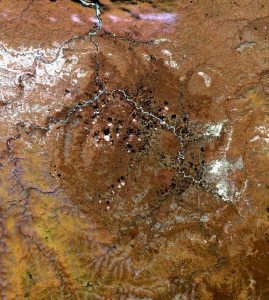
Asteroid impact date: Estimated 35.7 million years ago
Location: Siberia, Russia
Specs: Russian scientists claim that this crater site contains trillions of carats of diamonds, making it one of the largest diamond deposits in the world. These diamonds have been referred to as “impact diamonds.”
10. Chesapeake Bay Crater
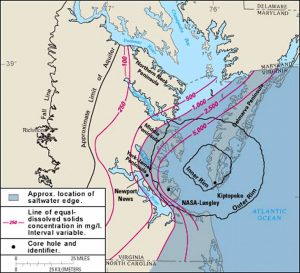
Asteroid impact date: Estimated 35 million years ago
Location: Virginia, United States
Specs: Discovered in the early 1980s, the Chesapeake Bay Crater is located approximately 125 miles (201 kilometers) from Washington, D.C. Some estimates suggest this crater is 53 miles (85 kilometers) wide.








